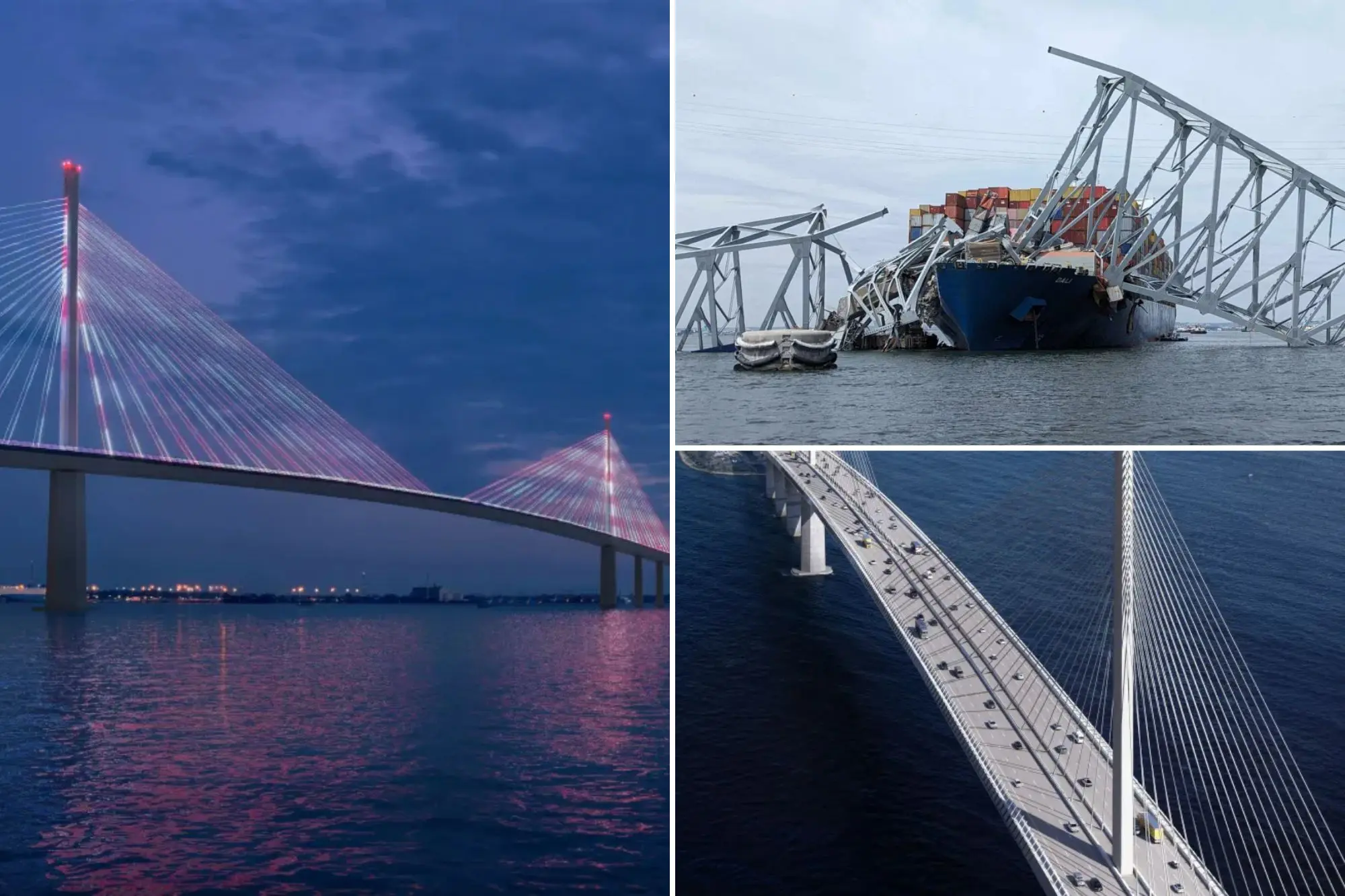Reconstruction of the collapsed Baltimore Francis Scott Key Bridge takes shape as its tender has been issued. The Maryland Transportation Authority has issued a request for proposals for the new design and build. The aim is to reconstruct a new bridge to replace the one that collapsed on 26th March after being hit by a container ship. The collapse of the bridge also caused the death of six individuals. With a length of 2.6 kilometers, the bridge was essential in facilitating the crossing of over 30,000 vehicles daily across the Patapsco River. The Maryland Transportation Authority (MDTA) requires that the design and builder work be done side-by-side across a two-phase contract. It also necessitates that the contracted company collaborate with the project’s stakeholders during the construction.
The Significance of Reconstructing the Collapsed Baltimore Francis Scott Key Bridge
Bruce Gartner, MDTA’s executive director, said: “The rebuilding of the Francis Scott Key Bridge in Baltimore is a massive effort. We need as many partners as possible pulling in one direction to help us accomplish our goals of reconnecting communities.” The authority hosted a virtual industry forum on 7 May, which attracted the attention of 1,700 contractors, consultants, and subcontractors. The reconstruction of the bridge is highly significant as the bridge served as a critical artery for vehicle traffic. It also ensured easy access to the Port of Baltimore, which is one of the busiest ports in the United States. 
Furthermore, as of 2021, the port was the nation’s 17th-largest in annual total cargo tonnage and handled more cars and trucks than any other in the U.S. The reconstruction of a new bridge will facilitate the expected resumption of the Baltimore harbor and atone for the significant economic ramifications that Baltimore has suffered since its collapse. The Baltimore Francis Scott Key Bridge tender is, therefore, highly significant.
The State of Affairs Regarding the Reconstruction of the Bridge
A few months after the collapse of Baltimore’s Francis Scott Key Bridge, officials have fully turned to the cleanup and rebuilding phase in its aftermath. Clearing the debris, which is blocking a vital shipping lane into the Port of Baltimore, is already completed. The federal officials and the government of Maryland have now turned to implementing its reconstruction. However, federal and state officials cautioned that reconstructing the bridge would be a long process. Recently, WeBuild proposed a new, safe, and innovative cable-stayed bridge to redefine the entrance to the historic port of Baltimore City. This was the project presented pro bono by Webuild, with its US subsidiary Lane, for the reconstruction of Baltimore’s Francis Scott Key Bridge, severing a vital link between the city’s harbour and the Atlantic Ocean.
The Scope of Works in the Reconstruction of the Bridge
Webuild’s proposal for the collapsed Baltimore Francis Scott Key Bridge includes a cable-stayed bridge that also aims to improve several functional aspects. This includes its safety, adaptability, and sustainability. The bridge will also be designed to ensure maximum safety for navigation, even for larger ships. It is assumed, for example, that the navigable clearance, the space that a ship can occupy to pass under the bridge, will be 213 feet (65 meters). This will be much greater than that of the collapsed bridge. Furthermore, the bridge span will be enlarged to about 2,300 feet (700 meters). 
The main pylons will be positioned in much shallower water and away from the navigation channel, allowing the Port of Baltimore to remain an important international port for years to come. A wider carriageway is also planned, with one lane added in each direction and emergency lanes widening.
Also read:
Webuild offers cable-stayed design as Baltimore’s Francis Scott Key Bridge Replacement
US-based AECOM Wins Delivery Partner Role on the $6 Billion Baltimore Rail Tunnel Project
The Big Apple Commences Planning on the Construction of The Mega $12 Billion Hotel-Casino Skyscraper
